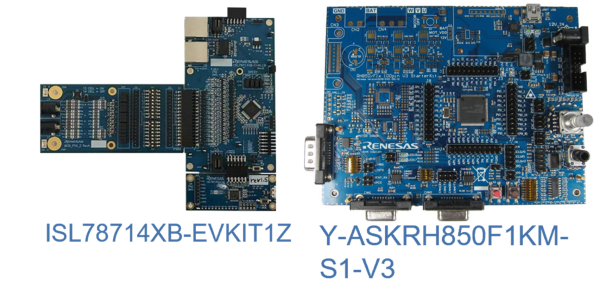My name is Takehara from Renesas.
I am involved in the development of sample application models and software for the Battery Management System (BMS) Evaluation Kit.
In this blog, I will introduce the BMS application model and software provided by Renesas.
1. About the BMS application model and software
Lithium-ion batteries, which are commonly used in electric vehicles, have the advantages of high energy density and light weight, but they are difficult to handle and misuse can lead to fires. Therefore, to use lithium-ion batteries efficiently and safely, the BMS estimates the state of charge (SOC) and state of health (SOH) of the batteries with high accuracy. Previously, these state parameters were generally calculated from the summation of the amount of charge (Coulomb counter) and the SOC characteristics of the cell voltages. Recently, estimation algorithms have been applied to enable more accurate estimation.
To increase estimation accuracy, it is necessary to adjust the parameters used in the estimation algorithm, considering the target battery characteristics. To adjust the parameters, the battery must be repeatedly charged and discharged, which takes an enormous amount of time. In addition, there is a risk of fire inherent in batteries. Furthermore, recently, batteries have become higher-voltage and higher-capacity to extend cruising range, and there are cases where batteries are handled at high output voltages of 1000 V or more during evaluation, increasing the risk of electric shock and other hazards.
These safety issues and development time can be solved using model-based simulation. As an example, simulation time can be reduced significantly by a factor of 1000 compared to the time required to perform charging and discharging in a real environment, and the virtual environment eliminates the risk of electric shock and fire.
Renesas provides sample application models and software to reduce the development burden on customers.
2. Advantages of the BMS application model and software
The BMS application model and software offered by Renesas has four advantages.
The first advantage is the reduction of rework that occurs during the evaluation of actual equipment: the Simulink model includes blocks for estimating SOC and SOH. Therefore, the estimation algorithm can be improved by simulation prior to the evaluation of the actual equipment.
The second advantage is the reduction of application software development man-hours. The sample application model provided by Renesas has a mechanism to automatically generate software that runs on the microcontroller.
The third advantage is the reduction of driver software development man-hours. Renesas provides sample driver software that controls the BMIC (Battery Management IC) and IPD (Intelligent Power Device). By combining this with application software, customers can operate the board on the actual device without having to develop code themselves.
Finally, we provide an application note that covers everything from PC simulation to code execution on the board. This documentation reduces the time required to learn the Renesas evaluation environment.
We believe these four benefits will save our customers over 1.5 months of development time, broken down as follows
- Application model creation: 2 weeks or more
- Embedding application software: 2 weeks or more
- Creation of BMIC control application with driver software: 1 week or more
- Learning how to use the model development environment, software development environment, and board: 1 week or more

3. Two types of BMS evaluation kits
Renesas offers two evaluation kits that run the BMS application software previously described. Each evaluation kit includes the BMICs with high measurement accuracy and excellent long-term drift performance.
The first evaluation kit contains five BMICs and the ASIL-D compliant RH850/P1M with the highest level of safety features.
The second evaluation kit consists of a board with one BMIC and a cost-effective ASIL-B compliant RH850/F1KM-S1 board.
4. Evaluation environment of Renesas
When evaluating software on a microcontroller using an actual battery, it is difficult to safely test abnormal conditions because of the time required for charging and discharging, as mentioned above. Therefore, Renesas uses a battery simulator for evaluation from the standpoint of reproducibility and safety. The application models and software provided by Renesas are evaluated on actual devices using a battery simulator, so you can use them with confidence.
Finally, if you are interested in reading more about the products mentioned in this blog, please visit our following web to get the latest information and contact us.



